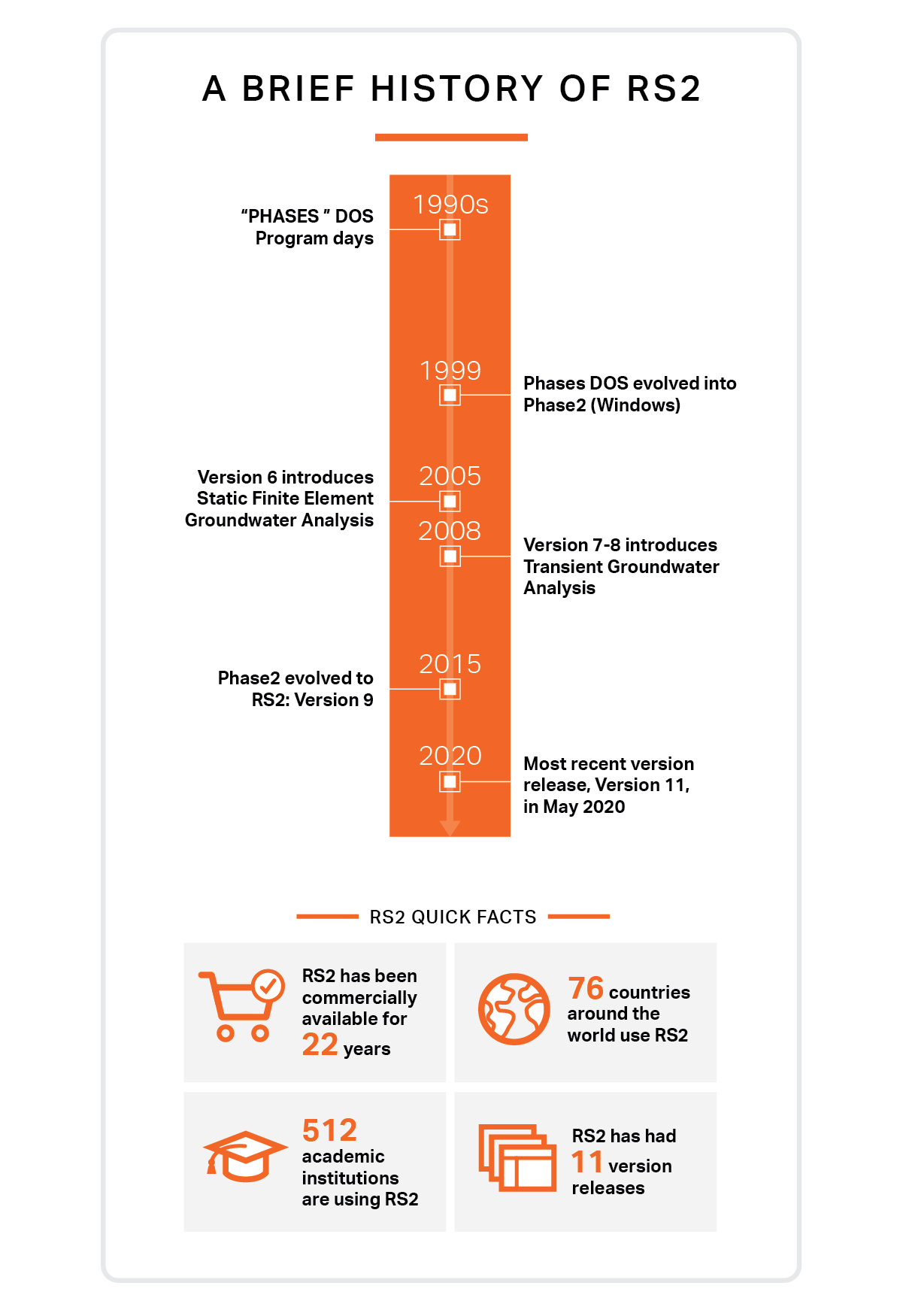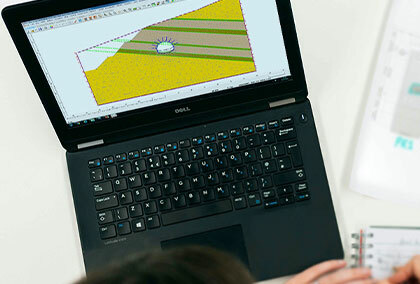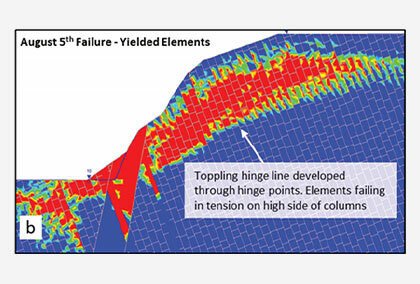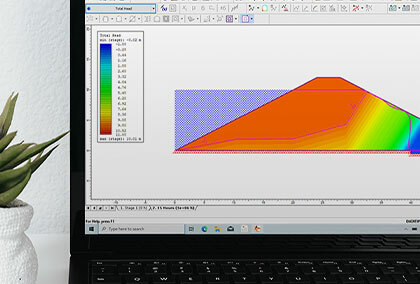The RS2 Evolution: From Inception To Version 11

To truly appreciate the capabilities of the modern geotechnical software we use today, we must look back at their origins.
When RS2 was first in development in the early 1990’s, it was a DOS program known as PHASES which focused primarily on rock mechanics and mining applications. In 1999, the first Windows based program was released, and the program was renamed Phase2.
Version 6 introduced Static Finite Element Groundwater Analysis followed by advancements in Transient Groundwater Analysis in Versions 7 and 8. As its features became more effective at analyzing soil mechanics, the name was changed to RS2 (RS standing for Rock and Soil) with the release of version 9 in 2015. Since then, it has taken shape into a powerful finite element analysis program for both rock and soil.
We are always aiming to expand the capabilities of our software and RS2 is no exception, having had 11 new versions since its inception and over 150 updates since 2008 alone, to make it a leader among finite element analysis software.
Today, RS2 can handle complex multi-stage models for a wide range of applications including tunnels in weak or jointed rock, underground powerhouse caverns, open-pit mines, MSE walls and more. In addition, RS2 is currently the only FEA program that provides material models other than Mohr-Coloumb and generalized Hoek-Brown for shear strength reduction.
As we look back at the history of RS2, one thing has never changed: Our desire to develop state of the art software that can better meet the needs of the user.


